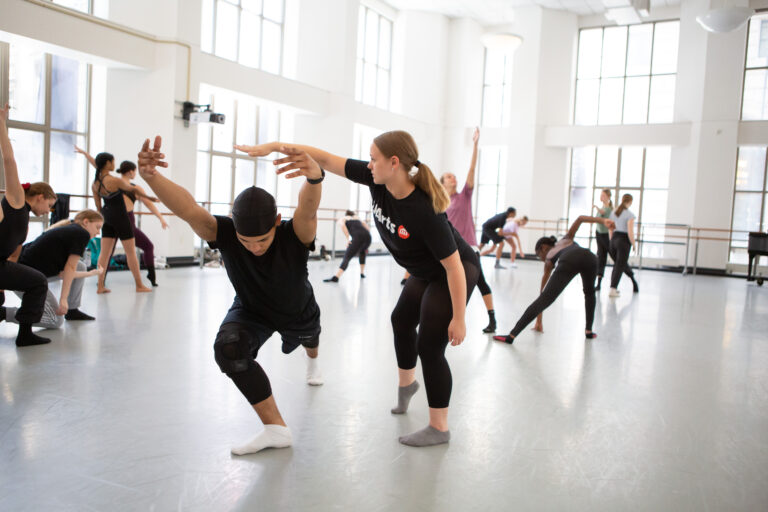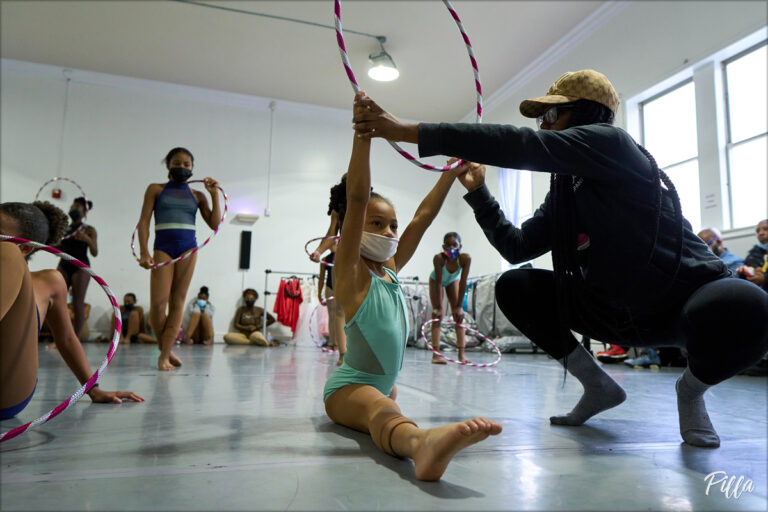
This year, dance educators have had to think through an unprecedented number of new concerns and policies as they’ve transitioned to teaching virtually or socially distanced.
But there’s one consideration that may have fallen by the wayside in the frenzy of taping off squares of marley and enclosing the front desk in plexiglass: What will you do if there is an emergency at your studio or while you’re teaching? What is your emergency action plan (EAP) in this new normal?
Even in the best of times, many studios don’t have EAPs, which puts dancers, staff, faculty and anyone else who uses the space at risk. But today, with a pandemic threatening a second wave and many teachers offering classes on Zoom or in unconventional spaces, having a specific and up-to-date EAP is essential for studio owners, dance department heads and other dance leaders.
What Is an EAP?
Lauren McIntyre, licensed athletic trainer and emergency management expert at Harkness Center for Dance Injuries at NYU Langone Health, describes an EAP as “the choreography of an emergency.” In the event that someone is injured or ill, or there is a problem with the facility (like flooding or fire), an EAP allows everyone to know their role in accessing appropriate help as quickly as possible, because the midst of a crisis is no time to deliberate over complex decisions. As McIntyre explains, in the case of cardiac arrest, you could have as little as 10 minutes to deliver lifesaving support.
Once an EAP is established, it should be written up with clear steps for various scenarios and all the necessary phone numbers. The plan should be shared with faculty and staff, and it should be printed, laminated (to keep it dry should sprinklers turn on, for example), and securely hung in a very visible place in every studio and office. Keep in mind, your EAP considers not only dancers but also parents, siblings, audience members and other bystanders who may be engaging in your dance environment.
As you begin to design your EAP for these challenging times, there will be many new concerns to consider. If you’re teaching in a park, do you know how to describe your location to a 911 dispatcher? Do you know who you’ll call if there is a problem in the studio and no one is at the front desk due to new social-distancing protocols? Are your virtual students in a safe space to dance, and are they supervised? In some cases, you might take for granted all that your normal space provides, like security staff (one of your first calls in an emergency), first aid kits, AEDs (defibrillators), staff with CPR certifications and more. When you’re teaching from unconventional spaces, you don’t have these resources and a standard EAP will need to be modified.
Ordinarily, many people come together to design an EAP, including studio owners, department directors, facility managers, security staff, even local emergency-response services. However, since so many dancers are still at home, you might consider including students and parents in this dialogue as well.
Where to Start
It might feel a bit macabre to think through all the unpleasant events that could occur in a dance class or performance, but it’s a helpful first step to building an EAP. Just remember, thinking about these things now could help you keep more people safe later.
McIntyre identifies two key questions that should guide your plan for any circumstance:
1) In an emergency, how can I get help as quickly as possible?
2) What are my legal and moral obligations?
Figuring out how to get help to a dancer in need will depend on many factors, like your student population, your teaching context and your proximity to your students. If you’re working in a conventional setting, you might send for someone on site who has emergency training, or call 911. However, if you’re teaching virtually, these plans won’t necessarily work. As McIntyre explains, calling 911 in New York City isn’t going to help a dancer who’s training in Denver!
While exploring hypothetical emergencies, you might conclude that the best way to get help to a far-off student involves reaching out to their emergency contact. In that case, you’ll likely need all students to complete an intake form that provides this information. Then, you’ll need to think about who can access that information. Does every teacher need a contact sheet, or, in an emergency, will the teacher reach out to a staff member who can place the appropriate call? Will all other students log off of the virtual class, or will they be involved in implementing part of the EAP? What if the teacher is the one in crisis? You can see how you’ll need to work backwards to choreograph your plan once you answer the first of McIntyre’s questions.
While you’ll need to speak to a lawyer to fully understand your legal duties, you might also want to think about what sits right with your conscience. If you’re hosting a large group of students from around the globe on Zoom, you may or may not have a legal duty to act if someone suddenly falls unconscious. But how would you feel if you were only able to helplessly watch a dancer in crisis because you didn’t have the appropriate information to help them? Would you feel more comfortable providing a safety reminder or asking students to privately chat their address and emergency contact information at the start of class? Or, if you teach minors, do you want to require that students be supervised while training at home? Whatever plan you decide on, McIntyre emphasizes the need for transparent communication about emergency protocols.
COVID-19 Concerns
An EAP should consider general emergencies as well as those specific to your situation. If you’re training in a park, you’ll need to think about weather. If you teach elderly dancers, you’ll think about the risks that are specific to that population. During this pandemic, we all need to anticipate risks related to COVID-19.
Though much is still unknown, research suggests that even asymptomatic young adults can experience serious complications of COVID-19. While tragic scenarios are not particularly likely to occur in your dance class, an EAP should consider them.
It’s more likely that dancers will be vulnerable to risks associated with dancing in unfamiliar environments and deconditioning due to quarantine. For example, you might consider EAPs for things like concussions, serious wounds, asthma attacks, ACL tears or severe sprains.
Any dancer (or teacher) who has had COVID-19 should be cleared for dancing by a medical professional before returning to training. Keep in mind, though, that by law, sharing medical information is an option, not a requirement, so you may not have a complete picture of your students’ health status.
Calling 911
Calling for emergency medical services (EMS) is often part of an EAP. However, McIntyre says that she’s only called 911 once in 10 years because not all alarming situations require EMS. For example, while a student having a seizure constitutes a call to 911 in many cases, it may not if the dancer has a known seizure disorder. Painful injuries may need urgent but not immediate medical attention, and a car ride to the ER will suffice. However, calling 911 assures that a medical professional will arrive on the scene, and if you’re not an expert in emergency management, like McIntyre, it may be an appropriate choice.
Attitudes about emergency services vary among individuals and communities, which might be something to discuss with your student population. For example, if a student or their family member is undocumented, calling 911 to their home may bring unnecessary risks. Similarly, you might hesitate before calling 911 if a Black student is unresponsive while training at home in their predominantly Black neighborhood due to concerns about police brutality. Or, a student with limited means may opt to turn down medical care, no matter the severity of their situation, due to fear of financially crippling bills. These are all complicated issues that likely require transparent dialogue with your community before an emergency occurs.
Emergency Preparedness Best Practices
Here are some actions that every teacher and student can take to mitigate their risks while dancing—especially in unique environments.
- Keep your cell phone charged and close by
- Know your exact location
- Have a first aid kit with you
- Know the location of any additional medical supplies you might need (inhaler, glucose monitor, EpiPen, etc.), and make sure they’re accessible
- If you’ll be dancing alone, tell the instructor, or create a buddy check-in system with friends/family
- Keep any important phone numbers in your phone and on paper (in your first aid kit, for example)
- Identify the nearest exit and all other emergency egress routes
- Know your internal and external risk factors (your health profile, fatigue level, and the dangers in your environment, for example)



